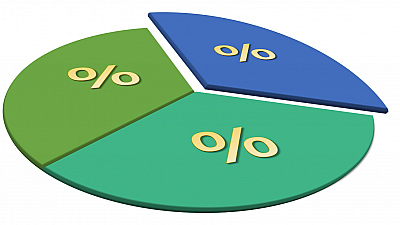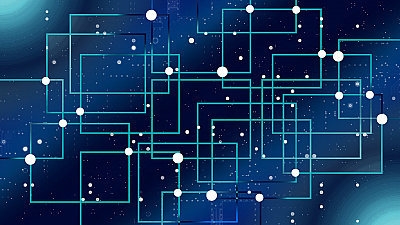The blockchain is an immutable record of encrypted data managed by a cluster of computers.
There is no central server, or any other single entity, owning the computing power or the data.
Instead, every participating computer is an equal member of the network – the so-called peer-to-peer system. The data is organized in blocks, each secured using cryptographic principles. The information in the blockchain system is stored in a shared and continuously updated database.
The database has no physical single location.
There is no original version that is being broadcasted throughout the network. Every computer (node) has the same version of the database, meaning there are millions of copies.
The information is available to everyone on the internet.
This gives a level of transparency never seen before in a financial system.
The blockchain technology is a simple but ingenious way of passing information from one person to another in a fully automated and safe manner.
It all starts with an initial transaction that is immediately taken by miners competing to validate the accuracy of the information using a cryptographic protocol. Once validated, the information is added to a block, along with other transactions. The usual size of one block is about 1 MB, the time it takes to validate it is about 10 minutes (through solving a complex mathematical problem) and, once approved, the containing information becomes immutable.
When the block is ready, it goes to join the chain.
This always happens in a chronological manner, so this block is added to the “end” and gets a number. This number that refers to the position of the block in the blockchain is called “Height”. The block is assigned a hash code, containing the exact parameters of the data inside.
It keeps information about the date, time, amount, participants (not their names, but their identifying digital signature), etc. What’s really important is that it stores the hash code of the preceding block. That is an ultimate safeguard system.
Hashes are cryptographic codes created by special algorithms.
They are extremely sensitive to all kinds of change (a Capital letter to Small letter gives a completely different set of characters), so even the slightest alteration would change the hash drastically. If a hacker tries to tamper with something in the block, the hash would change and would not correspond to that, saved in the next block. He could fix that, but there would be a next, and a next, and a next block. Besides, there are millions of copies of the blockchain, containing the original of that block.
Hacking the blockchain is not exactly impossible, it's simply not worth it.
Because of the direct way every transaction is made, the cost for it is minimal. This is a great advantage for the blockchain technology over the current bank transfers, for example.
Other business models that rely on a middleman can soon be outdated, too.
The so-called “smart contracts” are on the rise with blockchain.
These are simple contracts with defined conditions that the users have agreed to. When the conditions are met, the computer code executes them automatically. Blockchain is good for supply chains, file storage, elections, crowdfunding, the applications are endless.




